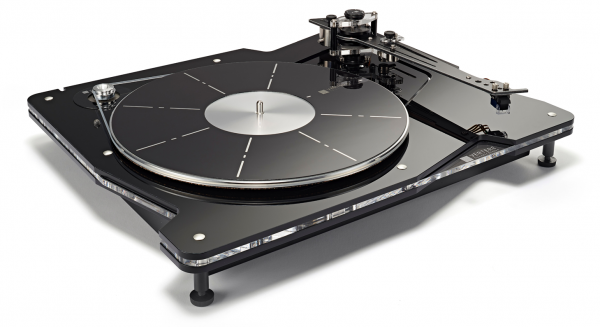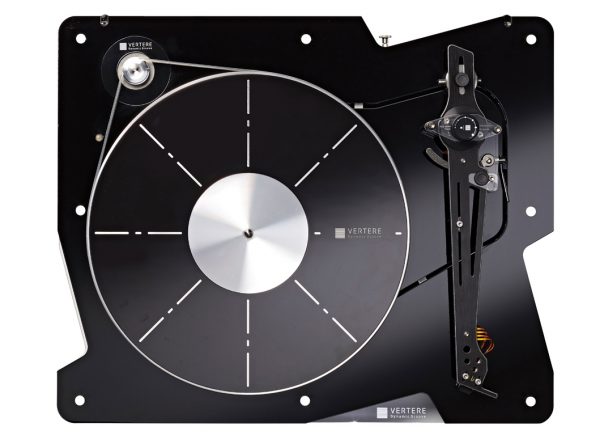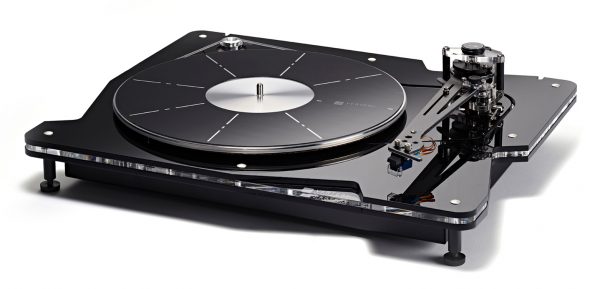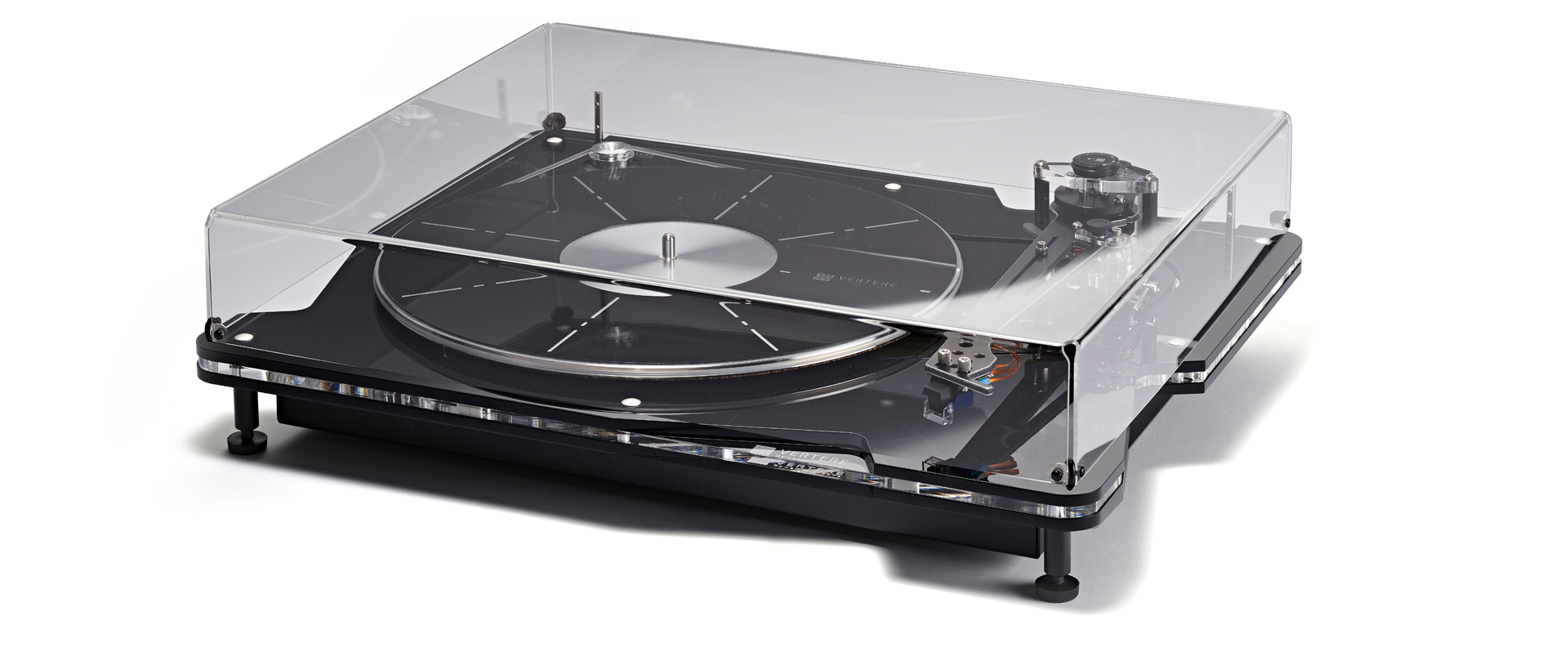THE term “plug and play” is not something one would associate with a high-end turntable manufacturer like Vertere Acoustics, the company founded by Touraj Moghaddam (the man behind Roksan’s acclaimed Xerxes and other turntables). Yet, Vertere’s “affordable” DG-1 Dynamic Groove is “as close as you’re going to get to ‘plug and play’ in a high-end, high-performance record player”, according to the company.
This is because, in the Vertere stables, the DG-1 is the “easiest to set up and use, and also contains some of our most innovative thinking.”
“For those daunted by the idea of setting up a record player, many of which seem to arrive in kit form, the DG-1 is as close as you’re going to get to ‘plug and play’ in a high-end, high-performance record player, and yet packed with innovations. The DG-1 is our simplest record player, yet also our most highly-developed.”

Vertere eschewed the easier route of simply replicating much of what it had already done in its flagship models, merely using less expensive materials and components for this new model. “So a complete re-imagining was the only approach to take.”
The design approach for the DG-1 was a return to the fundamentals, re-examining every element and developing an affordable and easy-to-use product without compromising on performance.

“Everything was re-examined, reconsidered and, if necessary, re-engineered, with some unusual solutions from the motor to the plinth, and from the tonearm to the bearings supporting it. Yes, at first glance the most striking features may be the multi-layered plinth, with its built-in standby mood lighting, and the flat profile tonearm with its apparent lack of wiring, but there’s a lot more going on beneath the skin to squeeze the maximum resolution and musical involvement from the DG-1, making it the best-sounding ‘plug-and-play’ record player you can buy.”

The DG-1’s 24-pole precision synchronous motor, individually tuned to minimise noise, uses an off-board power supply and is controlled by circuitry derived from that developed for the flagship RG-1 Reference Motor Drive. The DG-1’s advanced electrics were designed down to a single microprocessor PCB, which is both addressable for precision setting during manufacture and programmable for future upgrades. Copper/stainless steel shielding protects it from unwanted interference.
“The platter is driven via a precision machined aluminium alloy pulley on the motor and a bespoke silicon rubber drive belt for smoothness and durability, while electronic speed change, via a switch to the rear of the plinth top-plate, adds to the ease of use and removes any need for belt-handling. Like the pulley, the platter itself is also precision-machined alloy, to the top of which is bonded a PETG record interface mat. On the underside a cork/Neoprene/nitrile bonded disc controls platter resonance.”
The platter revolves on a highly polished stainless steel spindle, which rides in a main bearing housing using a super precision tungsten carbide ball, avoiding the need for complex regimes of lubrication, while still retaining the smoothness of rotation essential for the accurate playback of records.
The unique Vertere tonearm has a flat profile – “one of the most striking visual elements of the whole record player” – to eliminate distortion-causing resonance.

“The three-layer, non-resonant tonearm beam uses a flexible PCB sandwiched into the arm itself to carry signal from the cartridge to the output terminals. It’s a one-piece design, running continuously from the cartridge connections all the way to the output.”
The plinth is a sandwich construction, using non-resonant cast acrylic to form the main plinth and the sub-plinth for a clean and sophisticated look.
“This three-layer design incorporates the control button, the speed indicator and the user-selectable standby mood-lighting, as well as the silicon rubber isolation between the plinth and the platter assembly. The whole assembly sits on a steel chassis, chosen for optimal stability, housing the motor drive circuit and the motor all supported by three adjustable feet.”
Vertere includes a non-resonant acrylic dust-cover with hinges that are integrated into the plinth.
We’re uncertain if the DG-1, which is already shipping, comes mounted with a cartridge, but from the photos and description, that seems to be the case. Which would make it a great bargain, surely…






“…as close as you’re going to get to ‘plug and play’ in a high-end, high-performance record player”, according to the company.
The key-phrase here is “according to the company”, and it’s easy to demonstrate why one shouldn’t buy this line for a minute. If “…a complete re-imagining was the only approach to take” and “Everything was re-examined, reconsidered and, if necessary, re-engineered, with some unusual solutions from the motor to the plinth”, etc., then why is that motor attached Directly to the plinth (that bears both the platter and tonearm)? This is the cheap, non-engineered model that is prevalent today (e.g., WTL, Pro-ject, Rega, etc.) because it’s easier and way-cheaper to bolt a motor to a plinth (plastic in this case) than it is to properly engineer a tuned subchassis that insulates the platter, arm, and stylus from the motor, the importance of which a stethoscope will ably demonstrate.
Solid plastic plinth with directly-attached motor. Very much “…ordinary plug-and-play” and entirely mid-fi (rather than the manufacturer-claimed ‘high-end’), but undoubtedly for a very Unordinary price…
Excellent reply and you can add the specious claim that a flat tonearm is less resonant than tubular tonearms….
“silicone”, not “silicon”. One is a kind of synthetic rubber, the other a hard cystaline element.
Price = £2750.
A properly-engineered (subchassis-equipped) Linn Sondek, SOTA Sapphire, or Thorens (all with non-plastic tonearm) available for the same price.
I’ve alerted Vertere Acoustics to the comments posted here and asked them to respond. You wouldn’t believe that this is the same man who designed the Roksan Xerxes, would you?
The present-day contentment for a turntable, as a “vibration-measuring machine” (to quote Rega’s felicitous phrase), to also measure its own motor vibration (‘singing along’ to the vibrations of the musical signal detected by the stylus), eschewing any attempt to isolate the stylus from this major source of noise, is what is wrong with TT design today. When I pay £3K for a TT, I expect mechanical engineering appropriate to this task, not a plastic toy pushed on marketing-fluff…
Touraj was good enough to respond personally and I’ve copied his reply directly below.
“…Hi David,
Thank you for the email.
I would very much like to respond and will do so beginning of next week. We have a very busy few days coming up and also foreign visitors over the weekend. As I’d like to be quite thorough and cover it all that’s why I won’t be able to fit it in this week. There seems to be a good number of misunderstandings and should make an interesting read.
Hope this will be of value. Let me know if there are any issues…. All the best and kindest regards
Touraj…”
There are plenty of TT manufacturers who cannot be bothered to comment (e.g., Well-Tempered Labs), so hats-off to Mr. M for engaging (and plenty of audiophile websites that won’t brook critical comment, so likewise to Audiofi.net).
That said, for my money (which is what it comes down to for all of us individually), I’d drop the silly ‘mood lighting’ that shines through the clear acrylic part of his three-part plinth and replace it with two front-to-back leaf springs, the motor attached to the bottom plinth with the platter and tonearm attached to the top plinth. If there’s already proper decoupling between these three plinth-elements then Vertere would do better to emphasise that rather than the marketing hyperbole that makes up all of the descriptions of this TT. Put an accelerometer on the current plinth and present a trace of the vibration from the motor, and if there is none then I will retract my statements and concede misunderstanding(s) of Vertere’s efforts here.
However, part of the reason for my questioning this design-model is that I watched Touraj describe all of this back in Spring (video here: https://www.analogplanet.com/content/veteran-turntable-designer-touraj-moghaddam-introduces-dynamic-groove-record-player), and found it vague and highly unconvincing.
Simply put, if, as he says, “…The job of a record player is very simple … the most accurate measurement of something going past the stylus and throwing it from side to side over 1000 times every centimetre”, then the tonearm carrying that stylus has no business being attached to the same surface as a motor when that surface is made of a substance with the low damping factor of acrylic (< 0.06; if that's all that this plinth is made of — again, more information required here). This is a matter of fact for any aspiring high-fidelity TT, not 'misunderstanding'.
Well, 10-days on and Touraj didn’t show.
There’s better ways to spend your money than on this un-engineered piece of plastic sold on hype.